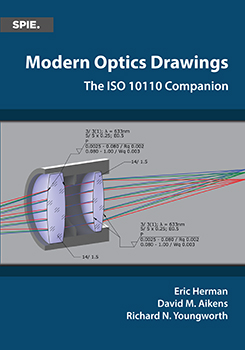|
We have shown in previous chapters that ISO 10110 can be a very powerful method for conveying information between the optical designer and the fabricator. The coded notation may seem confusing at first, but once understood, it obviates the need for significant additional communication throughout the fabrication process. By instituting the ISO 10110 drawing format, it is also possible to define an entire optical system specification and acceptance test. Starting the entire project with ISO 10110 and the associated ISO performance standards in mind allows the designer to have a concise set of requirements defined that can also be easily documented and communicated. Users should develop an understanding of how to use standards holistically; in other words, how to specify full optical systems and assemblies. In order to better understand how to use standards successfully for both tolerances and for performance, in this chapter we provide a complete example. The goal is to help users understand how to take advantage of the ISO 10110 drawing notation from the beginning of an optical design, through tolerancing, and result in finished drawings. Along with component drawings made with the ISO 10110 drawing format, the finished optical system may require overall performance verification. As discussed in chapter 10, there are many different types of performance metrics that can be used. In this chapter, we discuss specifications for an optical system that must be tested for multiple parameters. |
|
|


